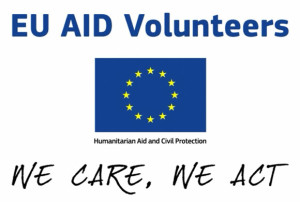 The most popular blog I’ve ever published, by far, is an exposé of a for-profit company based in Florida, called Community Service Help, Inc., that claimed it could match people have been assigned court-ordered community service “with a charity that is currently accepting online volunteers” – for a fee, payable by the person in need of community service. But the community service was watching videos. The company was selling paperwork saying people have completed virtual volunteering, that those people then turn into probation officers and the courts. The practice is at least unethical, and, according to at least one state, illegal.
The most popular blog I’ve ever published, by far, is an exposé of a for-profit company based in Florida, called Community Service Help, Inc., that claimed it could match people have been assigned court-ordered community service “with a charity that is currently accepting online volunteers” – for a fee, payable by the person in need of community service. But the community service was watching videos. The company was selling paperwork saying people have completed virtual volunteering, that those people then turn into probation officers and the courts. The practice is at least unethical, and, according to at least one state, illegal.
While I have no issue with a nonprofit organization, or even a government agency, charging a volunteer to cover expenses (materials, training, staff time to supervise and support the volunteer, criminal background check, etc.), I have a real problem with companies charging people to fake community service. And as a promoter of virtual volunteering since 1994, before I even knew it was called virtual volunteering, I also have a real problem with someone claiming watching videos is online volunteering. And, for those that might not know, here’s what real, legitimate virtual volunteering looks like. And here’s a wiki about virtual volunteering with even more detailed information.
Community Service Help isn’t the only company selling paperwork to people that need community service hours for the courts, and I’ve mentioned some of the other companies that are pulling off this scam in several blogs (all linked from the end of this one). Actually, I should it wasn’t the only company – its web site went offline in January 2016 and is now for sale. Hurrah! I hope I played a role in that company’s demise, which seemed to be at the hands of a court in Washington State, per this Consumer Protection Division civil complaint and subsequent consent decree.
Companies like Community Service Help post frequently to Craigslist, and I try to keep up on these folks, especially news stories about them, but somehow, I missed this story from 2014!
Caffeine group admits community-service scam
By JENNIFER PELTZ – Associated Press – Thursday, August 7, 2014
NEW YORK (AP) – An anti-caffeine activist pleaded guilty Thursday in a scheme to make court-ordered community service as easy as taking an online quiz.
Marina Kushner and the Caffeine Awareness Association, a group she founded, each pleaded guilty to a false-filing felony. Kushner’s promised sentence includes a $5,000 fine – and 300 hours of legitimate community service.
“A community service sentence is a public and personal responsibility,” Manhattan District Attorney Cyrus R. Vance Jr. said last week in unveiling the case. Kushner’s lawyer, Peter Schaffer, declined to comment Thursday.
Kushner, 47, was arrested recently in Delray Beach, Florida. While Manhattan prosecutors became suspicious after a local defendant filed a letter from the caffeine association to satisfy a community service sentence, questions also had arisen in Washington state and Oregon about a “fast community service” website linked to the group.
The association still exists, offering debunked claims about caffeine, but there’s no page anymore on its web site, at least that I can find, called “quick community service.”
I’ve written and sent a letter to Mr. Vance, thanking him for his pursuit of this company. I’m hoping other prosecutors all over the USA will take similar action. These companies damage nonprofits, damage courts, damage the idea of community service.
Is it possible, or even appropriate, for people that have been assigned community service hours by the court to do some or all of those hours online? Are they eligible for virtual volunteering? Yes, they are. Here’s detailed advice on supervising online volunteers in court-ordered settings, which I hope nonprofits, probation officers and court representatives will read. And note that Community Service Help and other similar companies would not hold up to the scrutiny recommended in this blog.
My other blogs on these companies that sell virtual volunteering and other community service in order to fool probation officers and courts, which include links to the various media articles about these companies:
Haters gonna hate, November 2014 update on Community Service Help and other similar, unethical companies
Community Service Help Cons Another Person – a first-person account by someone who paid for online community service and had it rejected by the court.
Online community service company tries to seem legit, a November 2013 update about efforts these companies are making to seem legitimate
Update on a virtual volunteering scam, from November 2012.
What online community service is – and is not – the very first blog I wrote exposing this company, back in January 2011, that resulted in the founder of the company calling me at home to beg me to take the blog down
Online volunteer scam goes global, a July 2011 update with links to TV stories trying to expose these scam companies
Courts being fooled by online community service scams, an update from November 2011 that is the most popular blog I’ve ever published







